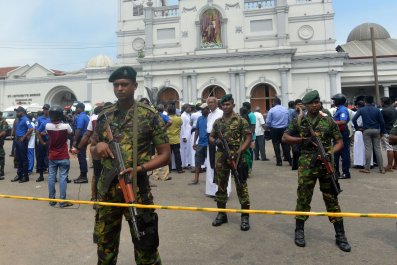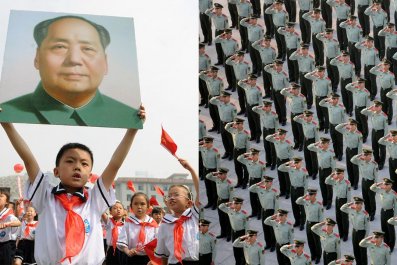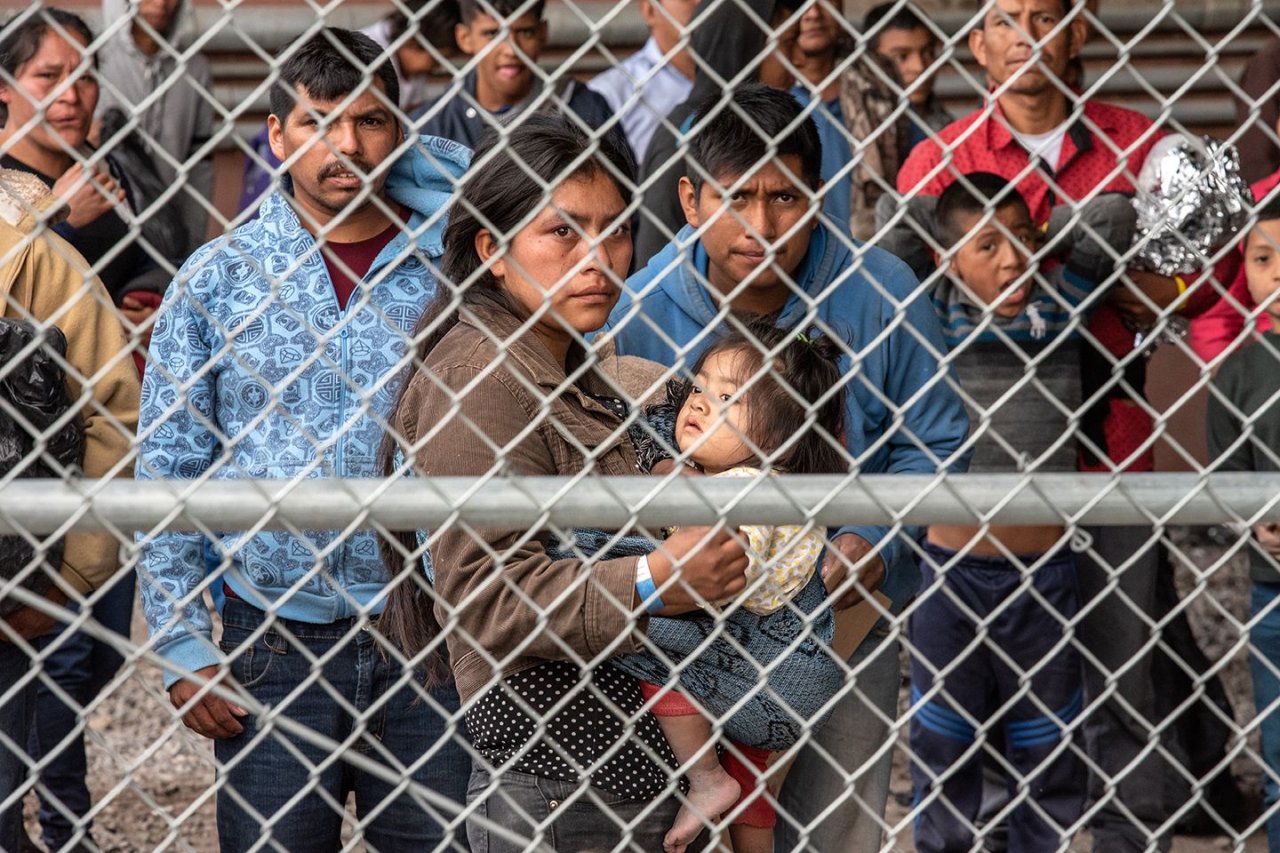
If you're looking for an emergency on the Mexico border, ask Teresa Cavendish.
Every morning in Tucson, the director of operations for Catholic Community Services of Southern Arizona gets a call from workers at the local Immigration and Customs Enforcement (ICE) office. They ask her how many beds she has or, more often, just tell her how many migrant adults and children they will be driving over later that day.
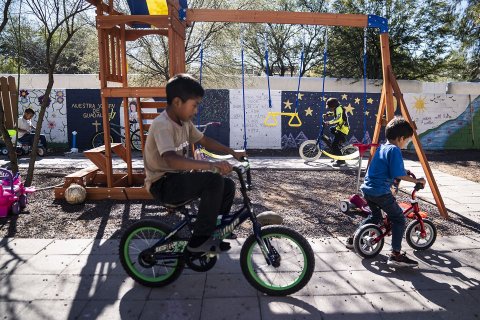
Cavendish isn't alone. In late March, during her term as secretary of the Department of Homeland Security, Kirstjen Nielsen sent an SOS to DHS agency chiefs asking employees to volunteer at the border to assist with transportation, food distribution, medical assessments and a duty called hospital watch.
"Prior immigration experience is not required," she wrote.
To fill the void on the ground in Tucson and elsewhere on the border, private citizens work for free or are sometimes paid by nongovernmental organizations, like the Red Cross, usually funded by philanthropy. They have, in other words, assumed the job of helping the migrants wishing to stay in the U.S., who continue to arrive despite the Trump administration's attempts to discourage them. In February alone, more than 76,000 migrants—many from Central America—poured into the country. Mexico's interior minister has estimated that 900,000 migrants will reach the U.S. border in 2019.
While federal immigration agencies flounder, citizens and NGOs have stepped up. It is difficult to determine exactly how many volunteers are helping charitable organizations along the border—through churches, homeless shelters and NGOs—but a conservative estimate would suggest in the thousands.
Some of the organizations, like Kids in Need of Defense, the CARA project and the Refugee and Immigrant Center for Education and Legal Services, offer free legal services. Others, like Catholic Charities of Rio Grande in Texas and untold numbers of individual churches, temporarily shelter and feed families. In Tucson, Catholic Community Services has 400 registered volunteers and 140 registered medical providers, Cavendish says.
Federal employees don't deny their reliance on civilians. "We don't have the time or space to hold all these families," says Henry Lucero, ICE field office director for the state of Arizona. "The system is completely overwhelmed, especially at the Customs and Border Patrol locations, where they only have so many terminals and computers to move them in. And when NGOs are at capacity, that is a red flag."
Lucero adds, "A year ago, we dropped off 50 people at shelters a day. Now, it's 300 a day." Between December 21, 2018, and March 2, 2019, ICE released 14,500 family members in Arizona, according to Lucero.
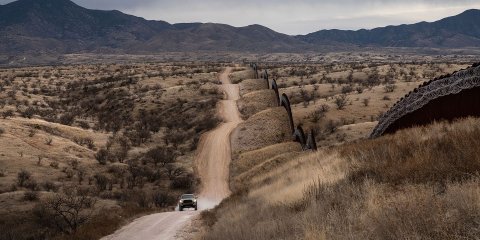
To understand why this is happening, you have to know how the system actually works—or doesn't.
In the past six months, tens of thousands of families have presented themselves at ports of entry or crossed the Arizona-Mexico border at other points to request asylum. Border patrol agents are required to hand off these asylum-seeking migrants to ICE, the agency responsible for processing them. To request asylum, migrants must make a "credible fear" statement and then agree to check in to an ICE office in 15 days.
But the human tide is so high right now that processing them is beyond the abilities of the local offices—and housing families with children is almost impossible.
It is still desert dark outside when the first contact comes, briefly lighting up the iPhone on Cavendish's bedside table in Tucson. "It starts a little after 6 o'clock every morning," she says. "I get an email from an ICE officer asking me how much space we have. Sometimes, that doesn't even matter. They will just tell me how many people they have and then wait for my response."
Cavendish is paid by Catholic Community Services, which is the largest NGO in Tucson. Her own group of volunteers helps run shelters, donate food and assist the migrants with contacting their relatives or sponsors in the U.S. They also arrange transportation. Doctors and nurses vaccinate children.
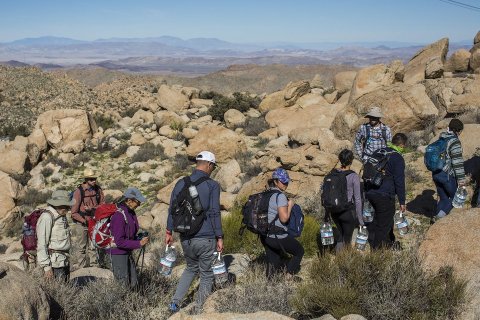
The volunteer network is the last line of defense against chaos in Tucson.
"When this current trend started in October, I and others thought they were all asylum seekers and had been screened and that's why they were being released," Cavendish says. "We are now discovering that because of the overflow, [border agents] don't even know how to process families at this magnitude."
Catholic Community Services' network of shelters would have run out of bed space months ago but for Tucson developer Ross Rulney, who temporarily donated a 66,000-square-foot monastery, the Benedictine Sanctuary and Covenant of Perpetual Adoration. Rulney intends to turn the landmark, built in the 1930s, into a commercial development. But for now, it is housing more than 2,000 migrants on Red Cross cots.
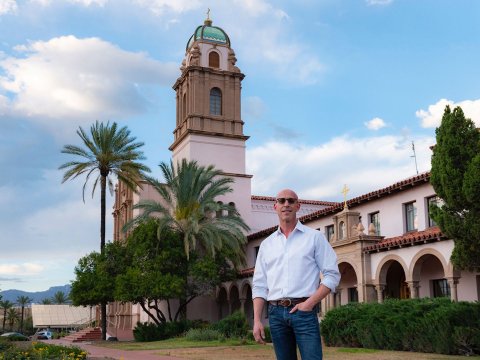
Cavendish depends on such donations. Recently, she realized the monastery larder was bare—just as ICE dropped off 180 parents and children. She mass-emailed her network, and within hours the shelves were stocked. "The community responded beautifully," she says. "Thank God they always do."
Lucero has no money to give and, in fact, has some of the same problems as the NGOs. He has been pulling ICE agents off the streets to deal with the administrative task of checking families in to the United States. And the agency has also partially given up tracking the new arrivals in Arizona: ICE used to put ankle monitors on migrants who were released, but the company that makes the bracelets can't keep up with demand, Lucero says.
Meanwhile, Lucero continues to process more migrants. He says ICE in Arizona holds families overnight, then offers them a choice: "street release" (essentially opening ICE's office doors), a ride to a bus station to begin their journey within the U.S. or a ride to churches or shelters, where networks of unpaid volunteers provide food and other aid. Most of the families choose the shelters, Lucero says.
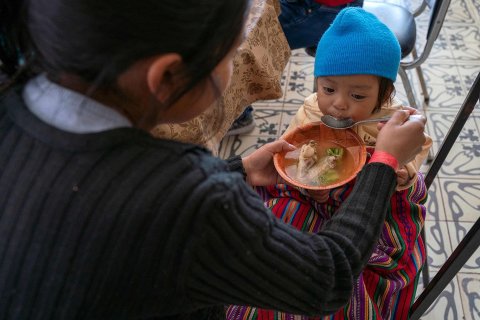
But even that ride isn't as straightforward as it seems. In Arizona, ICE drives migrants to shelters in government vehicles, although there is no appropriation for that service in their budget. Cavendish says she understands that the DHS discourages using government vehicles to move migrants to shelters. When asked, Lucero didn't deny it. "[The DHS] would prefer, I think, street release," Cavendish says. "Agents have let us know that there is actually a fair amount of pressure on them to stop using dollars for transportation of migrants to shelters. I started hearing that around the end of October last year."
The reason there is no money to help house and feed the migrants is because that money has been allocated elsewhere. Like his predecessors, President Donald Trump is throwing billions at the issue of immigration. His solutions are aimed at increased security on the U.S. side—walls, border agents and prisons. The cost of deploying soldiers, Marines and National Guard troops to the Mexico border is estimated to run to $850 million in fiscal 2019, according to Mark Cancian, a senior adviser at the Center for Strategic and International Studies and a retired Marine colonel. Cancian says the government could, in theory, "pick up some of these humanitarian things," but the current Trump budget plans don't include them.
Some local authorities along the border are trying to solve the problem by going to court.
For instance, San Diego has been housing migrant families in an old courthouse. In February, the San Diego County Board of Supervisors voted to sue the federal government for reimbursement. Officials in El Paso, Texas, are reportedly considering a similar claim for the city's humanitarian costs.
For activists and volunteers, the simplest solution is for the government to spend less on security and more on feeding, housing, processing and, if necessary, returning the migrants to their home countries.
Billy Peard, American Civil Liberties Union attorney for Southern Arizona, believes the administration should reframe its budget to focus on humanitarian aid, instead of militarizing the border. "The...real crisis is the NGOs stepping up and getting nothing from the government," he says. "All the money is going to what I call the homeland security complex."
Shannon O'Neil, senior fellow for Latin America Studies at the Council on Foreign Relations, says the solution starts outside the United States, with U.S. aid to the Northern Triangle. This trio of nations—Guatemala, El Salvador and Honduras—is the source of most of the migrants. In 2014, the Obama administration initiated a program that sent $750 million annually in U.S. aid to those nations to try to professionalize the police and courts, develop after-school programs for at-risk youth, create jobs and provide seed capital for small business. After shrinking the program's budget, Trump abruptly moved to halt the aid entirely in March, as the swelling number of incoming Central Americans sent the DHS into triage.
"The program had bipartisan support, no small feat," O'Neil says, adding that to take that money and spend more on border security is not the solution. "Congress had decided not to cut it. We spend over $20 billion a year in law enforcement at our Southern border. So you can see where the priorities are."
In an op-ed last year for The Washington Post supporting that aid, former Vice President Joe Biden wrote that the border crisis can be solved only at the root, inside countries of origin. The Democratic presidential candidate predicted the pace of migration would continue "unless we keep up the pressure and provide the support to make the Northern Triangle of Central America a prosperous and secure place to call home."
Alan Bersin, commissioner of U.S. Customs and Border Protection under President Barack Obama, says U.S. aid to Central America helps but that the real solution lies with Mexico. "The unaccompanied migrant crisis in 2014 was stopped by deporting and working with Mexico," he says. "This is not a national emergency. It is executive incompetence. Every policy they have tried to implement has failed. It is absolutely a failure to work with Mexico."

Meanwhile, as everyone waits for a solution from the Beltway, volunteers and charitable givers, like Rulney, bear the burden. "We are on the receiving end of a humanitarian crisis—we just deal with it," he says. But "it is a government…issue, and it needs to be solved by the people we put in office."




